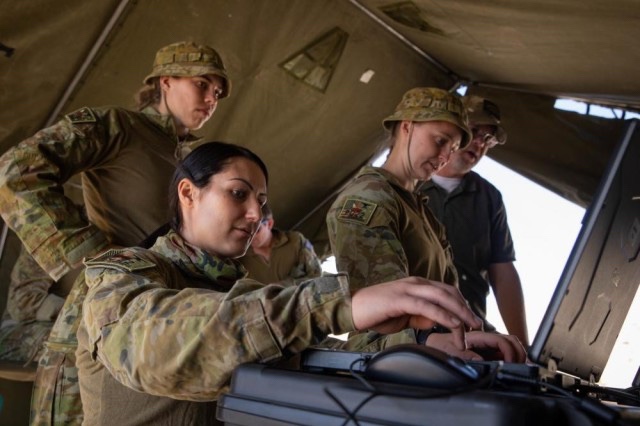
AUSTIN, Texas — As the U.S. Army transforms itself to ensure the all-service force can deter and, if necessary, win any future conflicts, it is engaged with allies and partners to develop new capabilities and foster leap-ahead warfighting advantages.
U.S. Army Futures Command plays a pivotal role in this effort by engaging regularly and meaningfully with partner nations, embracing a collective approach to warfare that aligns with the demands of multidomain operations to deliver speed, convergence and overmatch on the modern battlefield.
The command’s International Programs Team, part of the G-3/5/7 directorate, is spearheading AFC efforts to prepare for tomorrow’s joint and combined warfighting challenges in an adept and highly integrated manner, as exemplified by ongoing multinational experimentation being conducted through Project Convergence.
“The reality is, as we look to the future of warfare, we don’t do anything without our international partners,” said Newman Yang, AFC International Programs Team lead. “Whether it be Iraq, counterterrorism, Afghanistan, you name it — our operations are executed with our combined allies and partners; we don’t do it unilaterally.”
Yang joined AFC as a Department of the Army civilian after 30 years of active-duty service, in a career that included 20 years as an Army foreign area officer in locations such as Brunei, China, Hong Kong, Malaysia and Singapore. Due to increasing demand signal for greater engagement with AFC, the command recently expanded the International Programs Team to include personnel with diverse backgrounds in domestic and international Army experience, along with Department of Defense and Congressional engagement knowledge and foreign policy expertise.
Together, the team members help explain AFC’s Army transformation mission, structure and programs to international partners, many of whom have expressed an eagerness to stay abreast of new technologies and to engage in collaborative research and development efforts.
In the fall of 2021, for example, the International Programs Team assisted in the design and execution of a two-day modernization forum hosted by U.S. Army Europe and Africa; the forum, which took place in Germany and included the participation of 13 European allies and partners, offered an in-depth exploration of future opportunities, challenges and concerns related to transformation efforts.
The team also regularly supports engagement visits to AFC headquarters in Austin, recently welcoming senior military leaders from Europe, the Middle East and Asia to discuss shared future force plans and objectives.
Understanding what U.S. military equipment and warfighting systems will look like in the future enables allied and partner nations to make informed decisions about their own transformation requirements, Yang explained, and lays the foundation for future interoperability between allied country militaries.
The diligent work of the International Programs Team contributed to the multinational presence at this year’s Project Convergence event, Project Convergence 22, which brings together U.S., U.K. and Australian service members at U.S. military installations to explore the parameters and possibilities of future warfighting scenarios.
“U.K. and Australia have been full planning participants,” Yang said, noting the countries have incorporated their own service branches in the experiment in a realistic way. “This is a huge commitment on their part.”
Canada, France, Israel, Japan, Korea and New Zealand are also attending the experiment as observers, with the understanding that future iterations of Project Convergence may expand to include additional allied and partner nation participation.
The Project Convergence campaign of learning, experimentation and demonstration is accelerating the U.S military’s ability to transform rapidly and efficiently by identifying common preparedness gaps and assessing who might be best suited to address them across the various services and allied nations.
Yang described the mutually beneficial process as “part of that partnership fabric, where we can mutually develop technologies while also conserving resources to avoid duplication of effort where possible.”
“If we have proper agreements and policies in place, then we can work on sharing those technologies to ensure we persistently modernize our forces and equipment together to deter and defeat potential future adversaries.”
By Maureena Thompson, Army Futures Command

